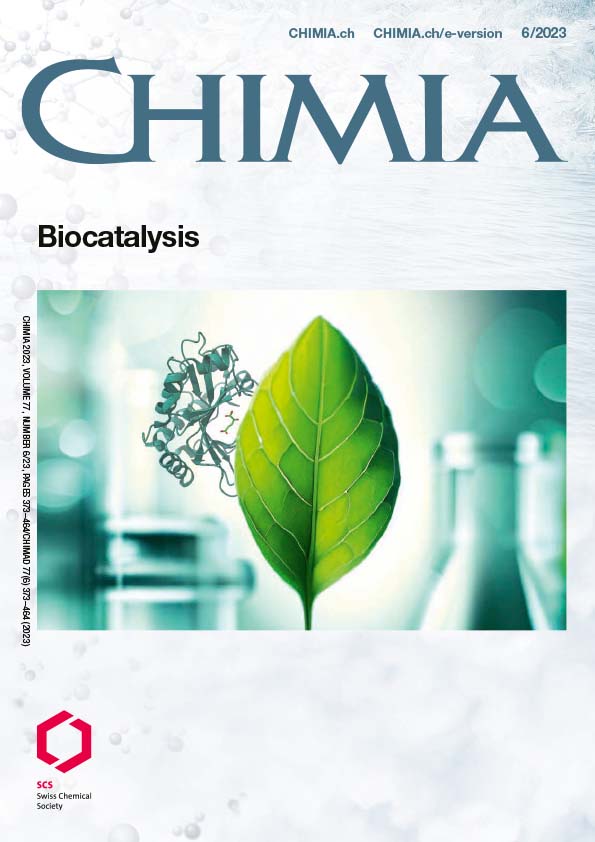Biotechnology – A Tool to Transform Givaudan’s Fragrance Ingredients Palette
DOI:
https://doi.org/10.2533/chimia.2023.384PMID:
38047777Keywords:
Alcohol dehydrogenase, Biocatalysis, Ene reductase, Fragrances, Squalene-hopene cyclaseAbstract
To support perfumers in their creation of olfactive signatures resulting in unique and instantly recognizable perfumes, there is a constant demand for the development of new odorant molecules and of novel processes for their production. Increasing the sustainability of both the molecules and the processes is a crucial activity at Givaudan. Biocatalysis has the potential to positively influence metrics applied at Givaudan that drive and measure our ambition to innovate responsibly, which is summarized in the FiveCarbon Path™. It targets an increased use of renewable carbon, carbon efficiency in synthesis, and the production of powerful and biodegradable odorant molecules while maximizing the use of upcycled carbon available from waste and side streams. This review illustrates with some examples how enzymes selected from the oxidoreductase and isomerase enzyme classes are applied at Givaudan for the preparation of odorant molecules both at laboratory and industrial scale.
Downloads
Published
Issue
Section
License
Copyright (c) 2023 Eric Eichhorn, Corinne Baumgartner, Marc Biermann

This work is licensed under a Creative Commons Attribution 4.0 International License.







